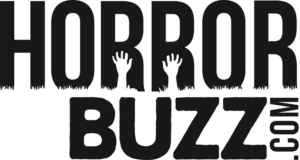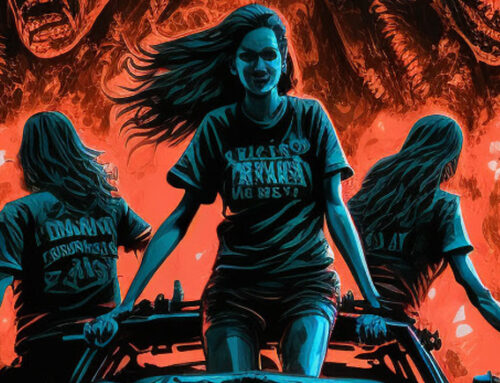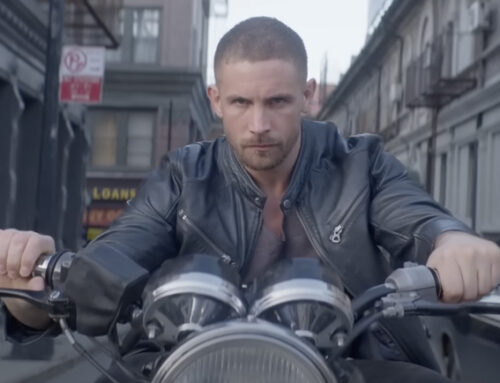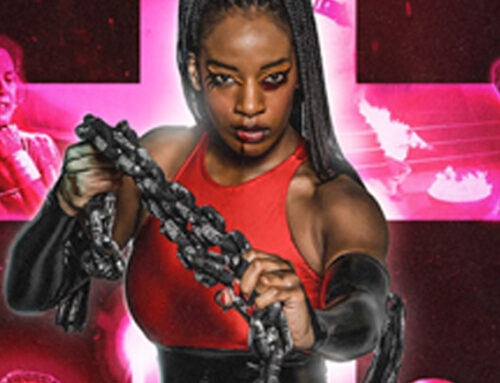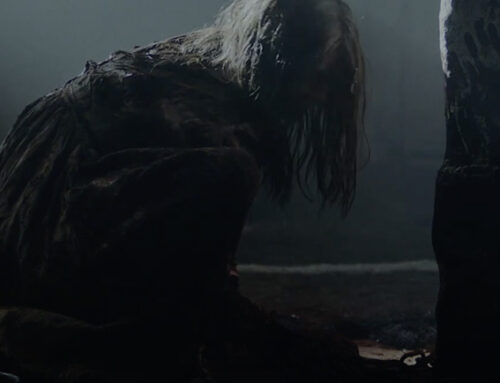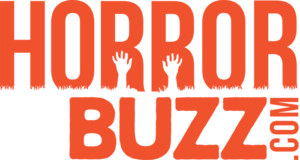 Writer, Director Adam Ripp is an affable guy. The New York born, Los Angeles raised filmmaker is living a fan boy’s dream. Growing up in Hollywood he was steeped in movies and movie making, taking walks up the street to movie palaces like the Grauman’s Chinese Theater and the Egyptian, to catch the latest blockbusters while staying up late at night to mine obscure cable channels for avant garde fair. Soaking in the films of Kubrick, Spielberg, Lucas, Carpenter, and countless other masters of cinema his life direction was set before he realized it.
Writer, Director Adam Ripp is an affable guy. The New York born, Los Angeles raised filmmaker is living a fan boy’s dream. Growing up in Hollywood he was steeped in movies and movie making, taking walks up the street to movie palaces like the Grauman’s Chinese Theater and the Egyptian, to catch the latest blockbusters while staying up late at night to mine obscure cable channels for avant garde fair. Soaking in the films of Kubrick, Spielberg, Lucas, Carpenter, and countless other masters of cinema his life direction was set before he realized it.
This lead to the obvious career choice of becoming a film director. Thank goodness he did. Ripp has an infectious passion for the craft of making movies. The Devil’s Whisper, co-written and directed by Adam Ripp shows the promise of a filmmaker who is hardly afraid to tackle more uncomfortable topics in the name of horror. We reviewed the film here.
With the arrival of The Devil’s Whisper this week on VOD,
We wanted to share the conversation we had with Ripp on his upbringing, what drew him to film, his inspirations, and what led to the creation of this new horror pic.
HorrorBuzz: Are you excited for the premiere of the movie
Adam Ripp: Totally excited. I came up with this idea two years ago, brought in two writing partners and we wrote the script in about maybe 6-9 months. Then a year from that day I was on set directing the film. Now a year from that time, I am premiering the film. I was born in New York, I was raised in Los Angeles, That’s where I grew up seeing films. I can’t tell you how excited I am to premiere the film and see it with an audience outside a few friends and family I test screened it for.
HB: I was able to check it out and one of the things that really kind of struck me was the willingness to touch on really difficult subject matter; tying demonic possession with abuse. Was that something you had difficulty with?
AR: No that was the idea. I was speaking with a friend and they were recounting their experience with repressed memories. They were having nightmares, they went to therapy, found out they were repressed memories that came from being sexually abused and I’ve had so many friends, unfortunately, that have had that childhood trauma. I wanted to make a horror film, or something supernatural, psychological, for a really long time and I thought, “Man I really want to address the subject matter. But I don’t want to do it in a literal sense, I don’t want to make a drama.” I wanted to make a film that was accessible to the widest audience possible and I thought. I didn’t want to make a film just about demonic possession. That doesn’t interest me. The idea of dark, very challenging subject matter is what drives me as a filmmaker. It was important for everyone that came aboard that they were ready to step up and connect with the truth of what we were doing. Not in a simple, kind of, accessible version, but to delve deep and explore what this shit is really like. I wanted to make an honest and very truthful film the depicts this and the emotions. I wanted to explore how the family dealt with this, this dark shit.
HB: The embodiment of the abuse, of the creature, how did you develop the look for that.
AR: I was going through a lot of pictures of demons and angels and what not, reading the torah, reading the bible and all these texts I though, “What is a demon?” It’s a fallen angel that has been cursed by God. So what I did was I showed the FX team pictures of angels, beautiful angels. Then I showed them pictures of burn victims of people that died. The whole idea was, what if you took this beautiful angel and burned him to death? What would the skin be like and the feel and the coloring and the texture be. That is really where it came from. The eyes, well, there are no eyes, they are blacked sockets. That is really what inspired me. It was a fallen angel that was burned in the fires of hell.
HB: Working with the kids on the film did you use particular techniques to get them to bring believability to the roles?
AR: Absolutely. Sometimes it just conversations in between takes, asking them about their experiences that may not feel comfortable talking about. I don’t want somebody’s idea of what it’s like to be whatever that emotion is. I want them to be connected to the scene as much as possible. So the demand that I had of my actors was that they had to be willing to go there. It was hard, because some were willing to but weren’t exactly able.
So you audition and you see that they are brilliant actors, then you know they can do it. When we are dealing with a powerful scene and something real is going on, all the energy connected to their bodies, their movement, it all comes naturally. All the energy and the connection to the real feeling is kind of being dispersed through the energy of their bodies and it comes out in the performance. We all do that naturally. Often times in the audition I would have them sit on a chair, feet firmly planted on the floor, and have them put their hands on their knees, and tell them not to movie anything and just have them connect with the moment and be honest in that moment. In that honesty, in that moment, they can take a scene that is supposed to be funny and make it dark. Or they could take a dark scene and make it very funny. It was a way to get them connected to that moment. All of the actors that were cast in the film were willing to go there and had the ability to go there.
HB: They definitely had chemistry as a family unit. Vega Baby, the production company behind The Devil’s Whisper, that is your company, correct?
AR: Yes.
HB: Are you Latino?
AR: No, I was born in New York, raised in Los Angeles, I’m Jewish, by choice, I was raised Jewish, my family is Jewish. I haven’t had one of those DNA tests yet. Growing up in LA though, I was surrounded by the Latino culture and I am connected to it. It was a culture steeped in religion and catholicism and I connected to it. For me as a filmmaker it’s exciting to explore cultures and worlds that I am not from.
HB: It came off really authentic.
AR: Yeah I mean I didn’t want it to be an “idea” of a Latino family, right? I gotta be honest. When I was writing it I wrote that the dad was making um, Weavos Rancheros (laughs) But I had my Latino friends read it and they were like, “Uh, no, we would just make an egg and throw it on toast or get an avocado.” And I thought to myself, “That’s great because it’s not like I’m having potato pancakes and matzoh ball soup every night. You gotta be open enough to get checked on that. Another thing that I wanted to depict was that, in really any household that I have been in that was multi-cultural, or multi-lingual, they never just speak English, right?
HB: Yeah, I’m really happy you bring that up too because that was another thing that I loved. The characters just breezed in and out of Spanish like it was nothing.
AR: Yeah that was something I put in the script. I was like, “I don’t know where they would do this, but…” Oh and all of the actors had to be able to speak Spanish too. For instance, that scene between the couple in the bedroom. I spoke to the actors and I said “Guys, you make it real.” I wanted them to decide when to speak Spanish or English and follow when it would feel right. That was really important to me and I ended up really proud of that scene.
Another cool scene was the confirmation scene. At the confirmation the dad was not wearing a tie. But my costume designer came up to me and said, “No. He has to wear a tie. You have to pick out a tie.” But I argued, “No. Marcos does NOT wear a tie. It’s sort of a subtle ‘fuck you’. Those details were important even if it was going against what the audience would expect.
HB: What horror films inspired you to make a horror film?
AR: Well when I was a kid, I don’t know if you have heard of the documentary on the Z Channel.
HB: YES!
AR: I grew up in the Hollywood Hills in the late 70’s and we had the Z Channel. When I was 7 years old, was raised by hippies in the music business, I didn’t have a lot of supervision. So the first films I was watching were like, The Exorcist. That was where it began for me. Then there was Halloween. That one blew my mind.
So, here’s a cool story. When I was a kid I was forced to take Piano lessons. Well, I found out that my teacher, one of his other students was Nick Castle (The Shape). This was like, 1979, ’80, and I was like, “I gotta meet him, I gotta get his autograph!” This was before anybody knew who Nick Castle was. So my teacher went back to Nick and was like, “Nick this kid wants your autograph.” I don’t think that anyone had even asked him for it before. So he sent back this huge black and white picture that said, “To Adam, Happy Halloween, Nick Castle” Somewhere in my storage I have the original boots, the actual pair he wore.
The Exorcist, Halloween, that was it for me. You know, when Friday the 13th came out, you know those films, I thought, “Okay. This is a very different movie.”
HB: Yeah.
AR: I make a distinction between film and movie and to me? Halloween is a great film. Friday the 13th, god bless it, it’s a fun movie.
I go back and watch it and I still love it. I watch it again and I see new things. All the choices that Laurie Strode makes in the movie. All my first films that I wrote when I was a kid were just little rip-offs of Halloween. To me, the most intriguing thing about that movie is, “What the fuck happened at Smith’s Grove Sanitarium?”
A few years ago I turned on the ol’ Netflix and I saw a movie called Contracted by Eric England. And this was before It Follows. I was so inspired by that movie. The Exorcist, Halloween, Nicholas Roeg’s Don’t Look Now, those inspire me. It kills me, when those films were successful and the studios thought, oh okay the people want horror films and they just make all these bad horror movies. It’s like “NO fucker! we just want good films!” When they made the sequels they didn’t see what made Halloween great, they just saw the obvious.
HB: Are there any homages to other films in The Devil’s Whisper?
AR: Yeah there are a lot of little things. When He’s (Alex) is opening up the amoire, I wanted this tone, I wanted this feeling, I wanted this tone, this thumping repeating tone from Carpenter’s The Thing. But what I had the composer do was start slow and get faster and faster and faster to build the tension when his hand is in that hole looking for the box.
Another one that I think is a bit more obvious is Jaws. With the pool party sequence and he’s watching his friends play. I used the triple reverse zoom like when Chief Brody sees the shark attack. The pool scene goes from this fun summer moment that turns into complete horror.
Also the street lamp in Alex’s bedroom is calling back to The Exorcist
HB: Oh yeah!
AR: Yeah I have always love that shot from The Exorcist so I wanted to throw that in.
HB: It makes me so happy to see someone that is passionate about film and so steeped in it, actually making film.
AR: Oh Good! Yeah, I started making stuff at a very very young age. I mean, I am a movie geek but I’m not an encyclopedia.
| Devil’s Whisper | ||
| RATING: | UR | Devil's Whisper - Official Trailer |
| Runtime: | 1hr. 23Mins. | |
| Directed By: | Adam Ripp | |
| Written By: | Adam Ripp Oliver Robins Paul Todisco | |
